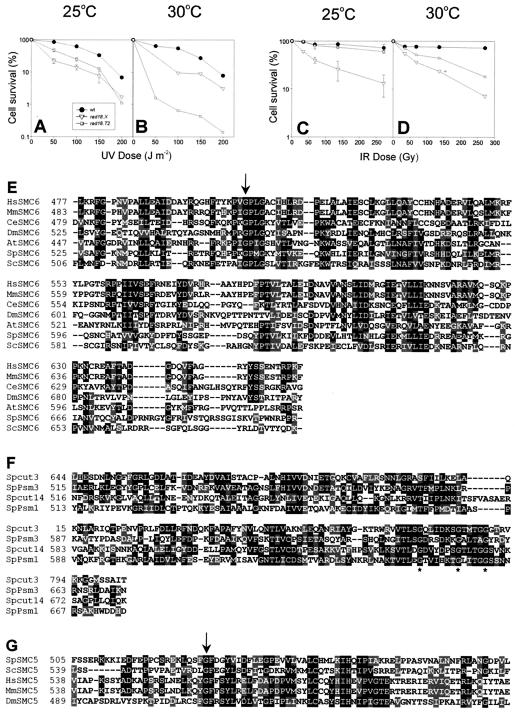FIG. 2.
Mutations in the hinge region cause sensitivity to DNA damage. Wild-type, rad18.X, and rad18-T2 cells grown at 25°C (A and C) or 30°C (B and D) were exposed to different doses of UV (A and B) or γ-rays (C and D), and their viabilities were determined at 25°C (A and C) or 30°C (B and D). (E) Alignment of the hinge regions of SMC6 proteins from humans, mice, Caenorhabditis elegans, D. melanogaster, A. thaliana, S. pombe, and S. cerevisiae. The conserved residue corresponding to Gly551 in Rad18 (Smc6) is indicated with an arrow. (F) Alignment of the hinge regions of the Smc1 (Psm1), Smc2 (Cut3), Smc3 (Psm3), and Smc4 (Cut14) proteins of S. pombe. Conserved glycine residues that were shown to be important for hinge-mediated interactions (13) are indicated with asterisks. (G) Alignment of part of the hinge regions of SMC5 proteins corresponding to aa 505 to 585 of the S. pombe protein (the hinge region spans aa 400 to 620). The conserved Gly529 residue is indicated.

